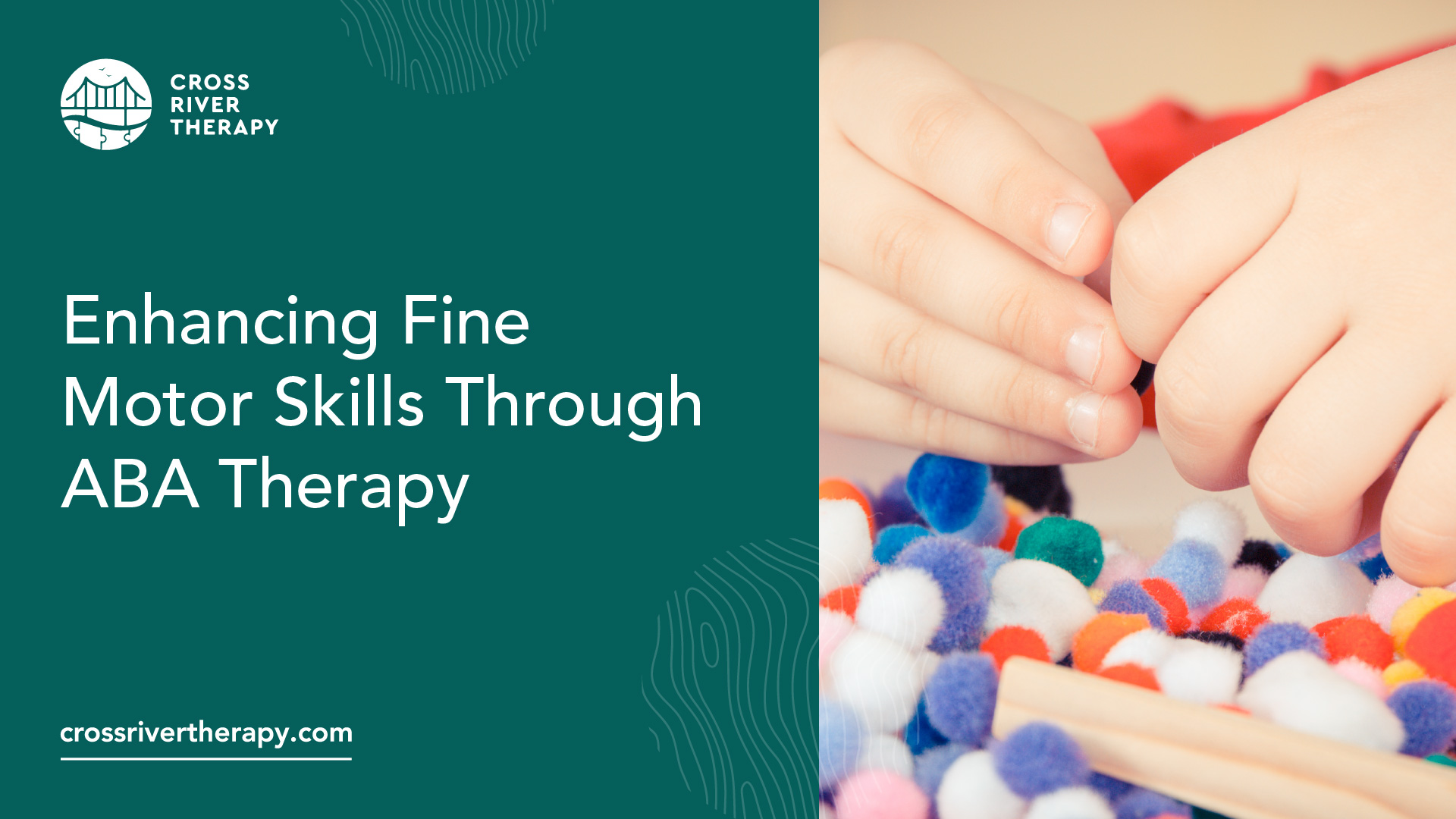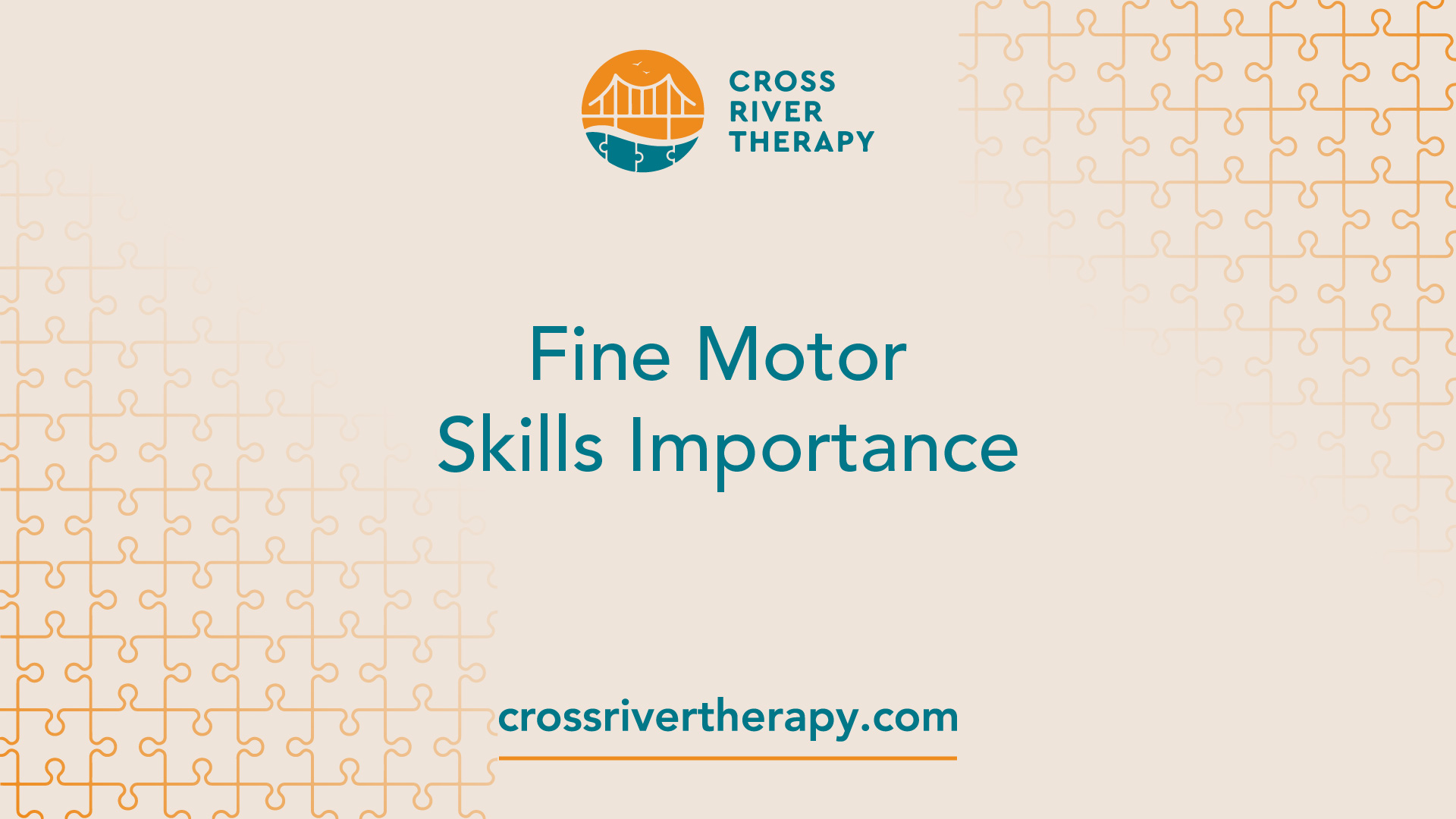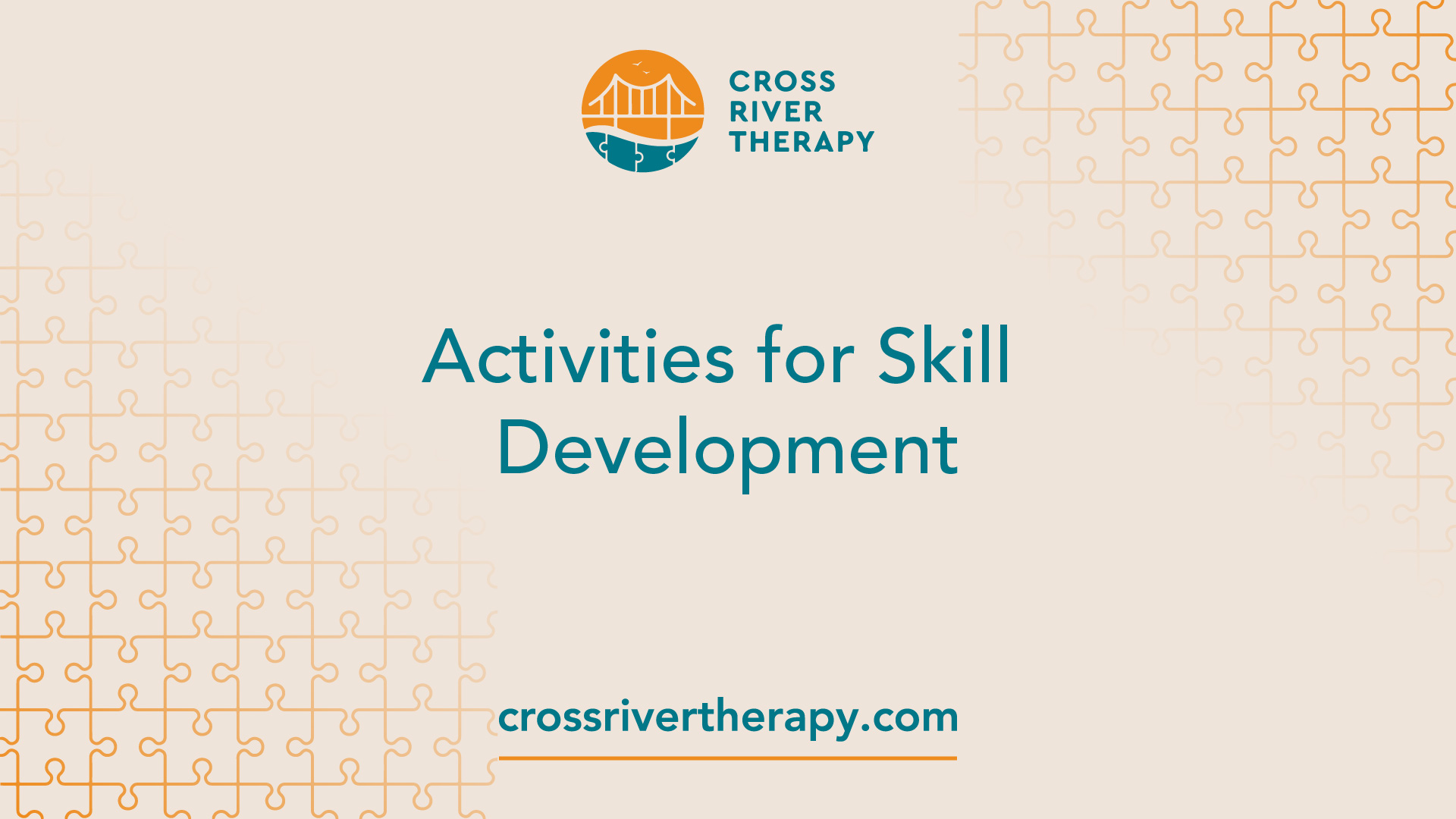Enhancing Fine Motor Skills Through ABA Therapy
Explore how ABA therapy improves fine motor skills to support tasks like writing, cutting, and dressing.

Understanding ABA Therapy
What is ABA Therapy?
Applied Behavior Analysis (ABA) therapy is a structured approach aimed at helping children with autism develop essential skills and improve their overall functioning. This therapy focuses on understanding behavior and using techniques to encourage positive changes.
ABA therapy is considered an evidence-based best practice treatment, endorsed by the US Surgeon General and the American Psychological Association, with over 20 studies supporting its effectiveness in improving outcomes for children with autism. The primary goal is to promote independence and successful future outcomes for individuals on the autism spectrum.
ABA therapy involves breaking down complex skills into smaller, achievable tasks. This method helps children slowly build upon their existing abilities while encouraging positive behaviors through reinforcement techniques.
Parents can engage in this process by collaborating with therapists to ensure consistency and support at home.
History and Development
ABA therapy has been utilized since the 1960s to assist children with autism and related developmental disorders. Over the decades, the methodology has evolved, adapting to new research and understanding of autism spectrum disorder (ASD).
Extensive research has evaluated the impact of ABA therapy on various developmental aspects, confirming its efficacy in helping children enhance their skills.
The development of ABA therapy has led to the formulation of several techniques, including discrete trial training and positive reinforcement. These approaches have become integral to the therapy process, making it a powerful tool for addressing challenges faced by children with autism.
As ABA continues to advance, it remains a focal point for parents seeking effective strategies to aid their children in achieving fine motor skills and overall development.
Goals of ABA Therapy
ABA therapy, or Applied Behavior Analysis, aims to improve various skills in children diagnosed with autism, including fine motor skills and independence. These goals play a crucial role in enhancing the overall quality of life for children with autism spectrum disorder (ASD).
Improving Fine Motor Skills
Fine motor skills are vital for manipulating objects, grasping tools, and performing intricate movements with precision. For children with autism, these skills can significantly affect their ability to complete tasks such as handwriting, self-care activities, and coordination.
Research indicates that motor difficulties are common in individuals with autism, with up to 80% experiencing overall motor skills impairment and gross motor delay.
ABA therapy specifically targets these skills by using structured techniques and activities to encourage development. By focusing on fine motor skills through various exercises and tasks, children can gain the necessary abilities to perform daily activities independently.
- Grasping Tools: Positive reinforcement for correct tool use.
- Handwriting: Discrete trial training to practice and improve letter formation.
- Self-Care Tasks: Task analysis and step-by-step instructions for tasks like brushing teeth or buttoning shirts.
Supporting Independence
Supporting independence is another significant goal of ABA therapy. As children improve their fine motor skills, they also become more capable of handling daily tasks on their own. This independence not only boosts their self-esteem but also enhances their overall quality of life [3].
ABA therapy helps children learn essential life skills that promote autonomy, such as grooming, academic tasks, and social interactions. The therapeutic strategies employed in ABA enable children with ASD to independently perform many of the proposed tasks, particularly those related to academic, social, and daily living skills.
Through consistent practice and positive reinforcement, children can develop the confidence needed to navigate their environments independently. For instance, a child may learn to tie their shoes or prepare their snacks through structured ABA interventions.
By focusing on improving fine motor skills and supporting independence, ABA therapy can significantly enhance the lives of children with autism.
Techniques Used in ABA
Understanding the techniques used in ABA therapy is essential for parents seeking to support their children with autism in developing fine motor skills. Two prominent methods include positive reinforcement and discrete trial training.
Positive Reinforcement
Positive reinforcement is a fundamental technique in ABA therapy. It operates on the principle that a behavior is more likely to be repeated if it is followed by a valued reward. This approach encourages children to engage in desired behaviors, making it an effective strategy for skill development.
In practice, when a child successfully completes a fine motor task, such as stacking blocks or using scissors, they may receive praise, a small treat, or a favorite activity as a reward. This not only motivates the child but also helps reinforce their learning.
- Stacking Blocks: Praise – Increases frequency.
- Using Scissors: Small Treat – Increases frequency.
- Completing a Puzzle: Extra Playtime – Increases frequency.
Discrete Trial Training
Discrete Trial Training (DTT) is another effective teaching strategy used in ABA therapy. It is characterized by breaking down skills into small, distinct elements. Each skill is taught one step at a time, making it easier for children to learn and master each component.
After a correct response to a discrete element being taught, positive reinforcement is provided.
DTT sessions typically involve three main parts: the instruction, the response, and the reinforcement. For instance, if a child is learning to use a button, the instructor might say, "Press the button," and the child’s successful action would be followed by praise or a reward.
Instruction: The therapist gives a clear directive.
- Example: "Press the button."
Response: The child performs the action.
- Example: Child presses the button.
Reinforcement: The child receives a reward for the correct response.
- Example: "Great job! Here’s a sticker!"
A board-certified behavior analyst (BCBA) typically designs and oversees the ABA program, ensuring it is tailored to each child’s unique skills and needs [1]. With the combination of positive reinforcement and discrete trial training, children can make significant progress in their fine motor skills, enhancing their overall development.
Fine Motor Skills Importance

Fine motor skills play a crucial role in the lives of children, particularly those diagnosed with autism spectrum disorder (ASD). These skills enable children to manipulate objects, grasp tools, and perform intricate movements with precision.
Developing fine motor skills is essential for fostering independence and enhancing overall quality of life.
Everyday Functionality
Fine motor skills are vital for daily tasks such as dressing, feeding, and writing. Mastering these skills allows children to participate in self-care activities and enhances their ability to function independently. Research indicates that fine motor efficiency can significantly support independence, particularly in activities of daily living (ADLs).
- Dressing: Enables buttoning, zipping, and tying shoelaces.
- Feeding: Facilitates using utensils and managing food.
- Writing: Supports handwriting and drawing skills.
The integration of fine motor activities into a child's daily routine can help reinforce these skills. Parents can create engaging activities at home that encourage practice and development.
Impact on Learning
Fine motor skills are also closely linked to a child's academic success. Research shows that children with ASD often experience motor difficulties, affecting tasks such as handwriting and coordination.
In a study analyzing the outcomes of ABA therapy, it was found that academic skills were among the most successfully performed tasks by children, followed by social skills and ADLs.
- Academic Skills: Most independently performed
- Social Skills: Second highest performance
- Activities of Daily Living: Third in performance
Improving fine motor skills not only enhances a child's ability to perform academic tasks but also supports cognitive development and memory. Parents can assist their children by incorporating skill-building activities in their routines, further enhancing their learning experiences.
Activities for Skill Development

Engaging in fun and purposeful activities can significantly enhance fine motor skills in children with autism. Parents can use various methods to support their child's development both in therapy settings and at home.
Fun Fine Motor Activities
Incorporating enjoyable activities into daily routines can help strengthen fine motor skills. Here are some engaging options:
- Peeling and Placing Stickers: Strengthens small hand muscles, encourages visual motor coordination
- Stringing Cheerios: Enhances pincer grasp and hand-eye coordination
- Ripping or Crumpling Paper: Develops hand strength and dexterity
- Placing Coins in a Piggy Bank: Improves grasping skills and coordination
- Attaching Clothespins to Board Books: Strengthens fingers and promotes fine motor precision
For school-age children, consider introducing fine motor games like LEGOs, LiteBrite, Connect 4, and Jenga. These activities can be both fun and educational, helping to refine coordination and control [6].
Incorporating Skills at Home
Parents can create a supportive environment at home to foster fine motor skill development. Here are some strategies:
- Fine Motor Precision Activities: Engage children in mazes, puzzles, or Perler bead creations. These activities encourage targeted movements and improve hand coordination.
- Fine Motor Strength Activities: Use items like syringes, tweezers, or hole punchers for creative projects. Activities such as origami and finding leaves for indentations can enhance hand strength.
- Routine Integration: Incorporate fine motor tasks into daily routines. Simple activities like helping with meal preparation, sorting laundry, or setting the table can make skill development a natural part of life.
- Collaborative Play: Organize playdates with friends where fine motor skill games can be played. This encourages social interaction while practicing essential skills.
By incorporating these activities at home, parents can effectively support their child's growth in fine motor skills, which are crucial for independence and overall quality of life. For more ways to enhance skills, consider exploring aba therapy for early childhood development and aba therapy and play therapy.
The Role of Parents
Parents play a vital role in the success of ABA therapy for their children. By actively participating in the therapy process, they can help their children develop fine motor skills and achieve greater independence.
Collaborating with Therapists
Collaboration between parents and therapists is essential for effective ABA therapy. Parent-implemented Intervention (PII) involves ABA practitioners training and working alongside parents to deliver ABA interventions. Research indicates that this approach can be highly effective for children on the autism spectrum.
In this collaborative effort, parents learn techniques and strategies that they can use at home. Regular communication with therapists ensures that parents are informed about their child's progress and can adjust their approach as needed.
This partnership not only enhances the child's learning experience but also helps parents feel more confident in their ability to support their child's development.
Supporting Progress at Home
Parents can reinforce the skills learned during therapy sessions by incorporating them into daily life at home. This can include simple activities that promote fine motor skills, such as:
- Playdough Fun: Encourage squeezing, rolling, and cutting playdough to strengthen hand muscles.
- Puzzle Play: Work on puzzles to improve dexterity and problem-solving skills.
- Coloring and Drawing: Use crayons or markers to develop grip and control.
- Everyday Tasks: Involve children in daily chores, such as setting the table or sorting laundry, to practice fine motor skills.
By integrating these activities into everyday routines, parents can help their children practice and reinforce the skills learned during ABA therapy. Engaging in these activities not only enhances fine motor skills but also fosters a sense of accomplishment and independence.
Parents should also celebrate their child's progress, no matter how small. Recognizing achievements can motivate children and encourage them to continue working on their skills. For more information on how ABA therapy can support children's development, check out our articles on aba therapy for gross motor skills and aba therapy and emotional development.
Through collaboration with therapists and consistent practice at home, parents can significantly contribute to their child's success in acquiring essential skills for daily living.
FAQs
What role do visual supports play?
Visual supports help individuals understand and practice fine motor tasks.
How are activities adjusted for different skill levels?
Activities are modified based on skill level and gradually increased in complexity.
Can ABA Therapy be personalized?
Yes, therapy can be customized to individual fine motor skill needs.
How can parents help at home?
Parents can support by practicing tasks, using reinforcement, and providing opportunities for fine motor activities.
Are additional strategies used?
Yes, including occupational therapy, fine motor skill games, and environmental modifications.
References
[1]: https://www.autismspeaks.org/applied-behavior-analysis
[2]: https://www.goldstarrehab.com/parent-resources/how-does-aba-therapy-help-autism
[4]: https://www.ncbi.nlm.nih.gov/pmc/articles/PMC10169625/
[5]:



